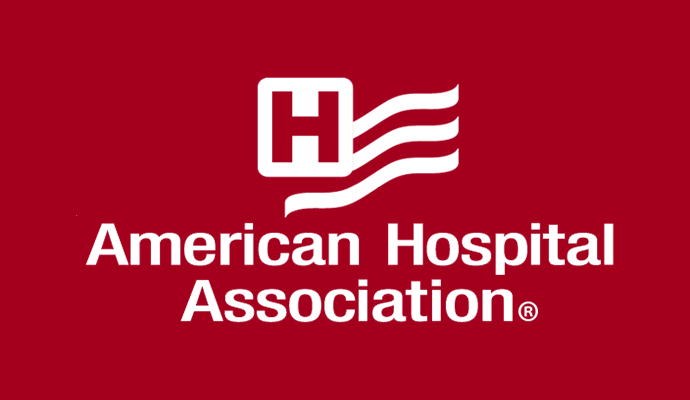AHA Pens Oppositions to 2022 Physician Fee Schedule Proposed Rule
The organization is concerned about policies in the 2022 Physician Fee Schedule proposed rule, ranging from telehealth worries to apprehension about MIPS.

Source: AHA logo
- The American Hospital Association (AHA) has penned a letter to CMS Administrator Chiquita Brooks-LaSure detailing its concerns surrounding CMS’ proposed Physician Fee Schedule (PFS) for 2022.
The AHA agreed with certain aspects of the rule but also voiced various problems and recommendations for CMS to consider.
The AHA opposed several telehealth policies that CMS included in the rule. The organization urged CMS to work with Congress to eliminate the geographic and originating site restrictions included in the Social Security Act. These restrictions limit telehealth use to rural areas and require patients to be at certain facilities to receive care.
Changing this federal policy would increase access to telehealth and ensure patients could receive care from their own homes.
The AHA also opposed CMS’ proposal to require in-person visits every six months in order to continue providing coverage and reimbursement for telemental health services. Many patients use telehealth because it offers convenience that in-person visits do not, and the AHA believes patients should not have to attend an in-person appointment before they can utilize telehealth services.
The AHA suggested that CMS reconsider the policy and limit the requirement to services that would benefit from in-person visits such as psychiatric medication management.
The AHA had issues with the proposed payment changes in the PFS as well, specifically the 10.2 percent conversion factor cut. The organization asked CMS to maintain the 3.75 percent increase in the conversion factor for 2022 in order to ensure patients do not lose access to certain services.
While the AHA voiced support for CMS’ proposal to delay the payment penalty phase of the Appropriate Use Criteria (AUC) program, the organization asked CMS to reconsider the overall program design.
“The AUC program was designed to achieve more appropriate ordering of advanced diagnostic imaging services by ordering physicians,” AHA wrote. “However, the program places a significant amount of burden on furnishing providers, who must navigate a complex and manual workflow to report AUC information in order to successfully receive payment for their treatment.”
The AHA also urged CMS not to finalize the proposed policy about split E/M visits. Medicare will pay only 85 percent of the fee schedule rate if a physician does not perform a substantive part of a visit that is split between the physician and a non-physician practitioner.
CMS plans to define “substantive” as more than half of the total time of the visit, which AHA says may result in a reduction of physician revenue. The AHA suggested that CMS instead set the threshold at 25 percent of the visit.
CMS’ critical care policy may also lead to reduced physician revenue. Its proposal includes bundling critical care visits with procedure codes that have a global surgical period, which would prohibit providers from reporting critical care visits during the same time as a procedure with a global surgical period. The AHA urged CMS to reconsider this policy.
The AHA voiced concerns about the direction of the Merit-Based Incentive Payment System’s Value Pathways (MVP). The organization believes that CMS should not set a date for mandatory MVP transition until they address several conceptual issues.
“First, CMS would need to ensure there are enough measures available to create MVPs applicable to the more than 1 million eligible clinicians that currently participate in the MIPS program,” the letter stated. “CMS must also ensure that using an MVP approach would provide a fair, equitable comparison of performance across clinician and group types and specialties.”
“Lastly, the AHA remains concerned about the feasibility and potential administrative burden of MVP approach for multi-specialty group practices,” continued the letter.
The AHA also opposed CMS’ plan to use indirect estimation to construct their stratified reports. The organization is concerned the method may lead to measurement bias.
